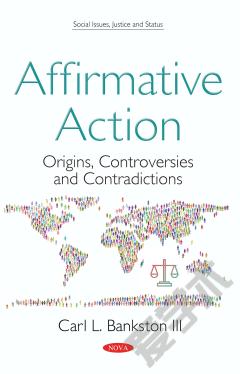Affirmative Action: Origins, Controversies and Contradictions
Affirmative action is one of the most controversial policies of our time. This book provides a succinct but comprehensive account of the historical background of affirmative action, including the complicated racial history that gave rise to it and the changing meaning of affirmative action in government and law, giving special attention to the role of the civil rights movement. The book traces the major court decisions that have defined how affirmative action policies in education and employment may be used and that have defined the limitations of these policies. It gives particular attention to the emergence of the diversity rationale and to how this became the central legal justification for affirmative action. The book describes how the Supreme Court has been as divided as American society in general on the question of affirmative action. It discusses the relevance of the changing composition of the American population for affirmative action, giving special attention to the Latino and Asian groups that have been the greatest part of demographic change in the United States. It considers the ways in which diversity has become a complicated concept in this changing society. These pages also devote attention to arguments that racial and ethnic affirmative action should be replaced by efforts of socioeconomic affirmative action that would be more relevant to contemporary American society. Following this discussion of social and economic change, this brief volume examines the different ways in which affirmative action is a problematic approach to social inequality. The book suggests that inequality is deeply rooted in social networks and cultural patterns, and that inequality therefore does not lend itself to redesign through planning. It suggests, further, that affirmative action is based on the idea that upward mobility can be selectively encouraged across groups, without recognizing that universal upward movement is not possible. It provides an even-handed consideration of the “mismatch,” qualification and stigma arguments. Finally, the book looks at the possible future of affirmative action, considering pressures working against preferential policies in employment, education and the substantial support that these policies will continue to have.
{{comment.content}}








 京公网安备 11010802027623号
京公网安备 11010802027623号